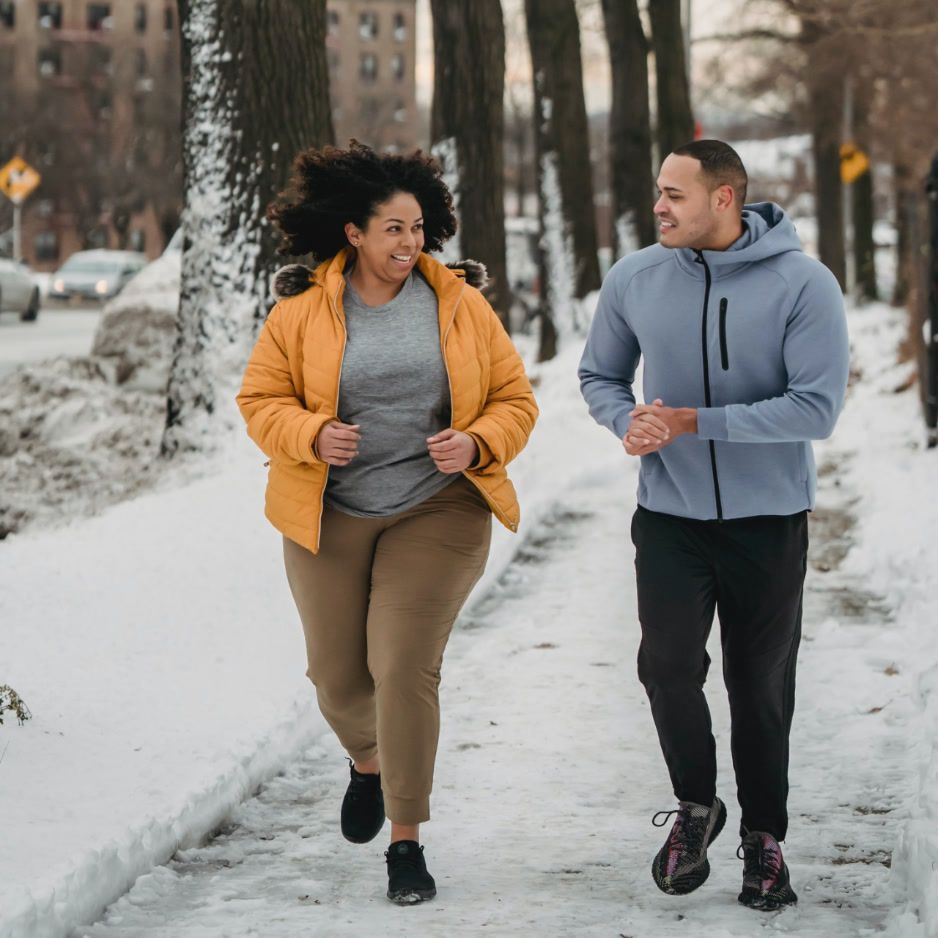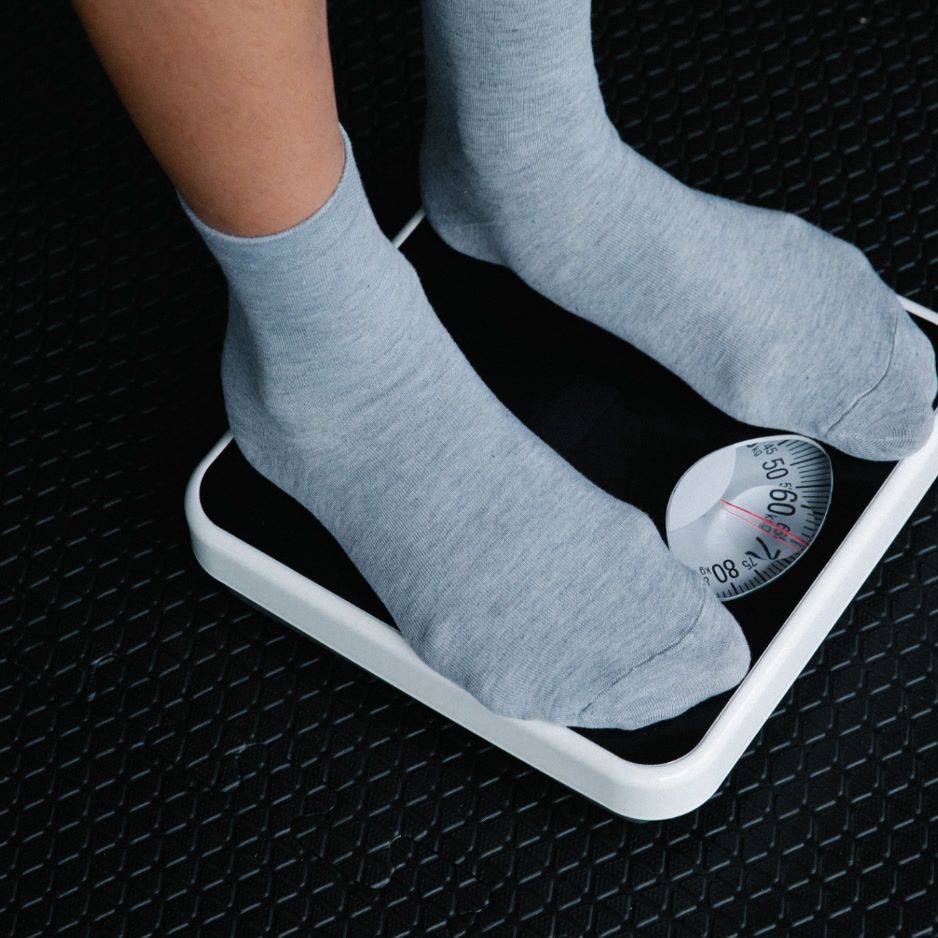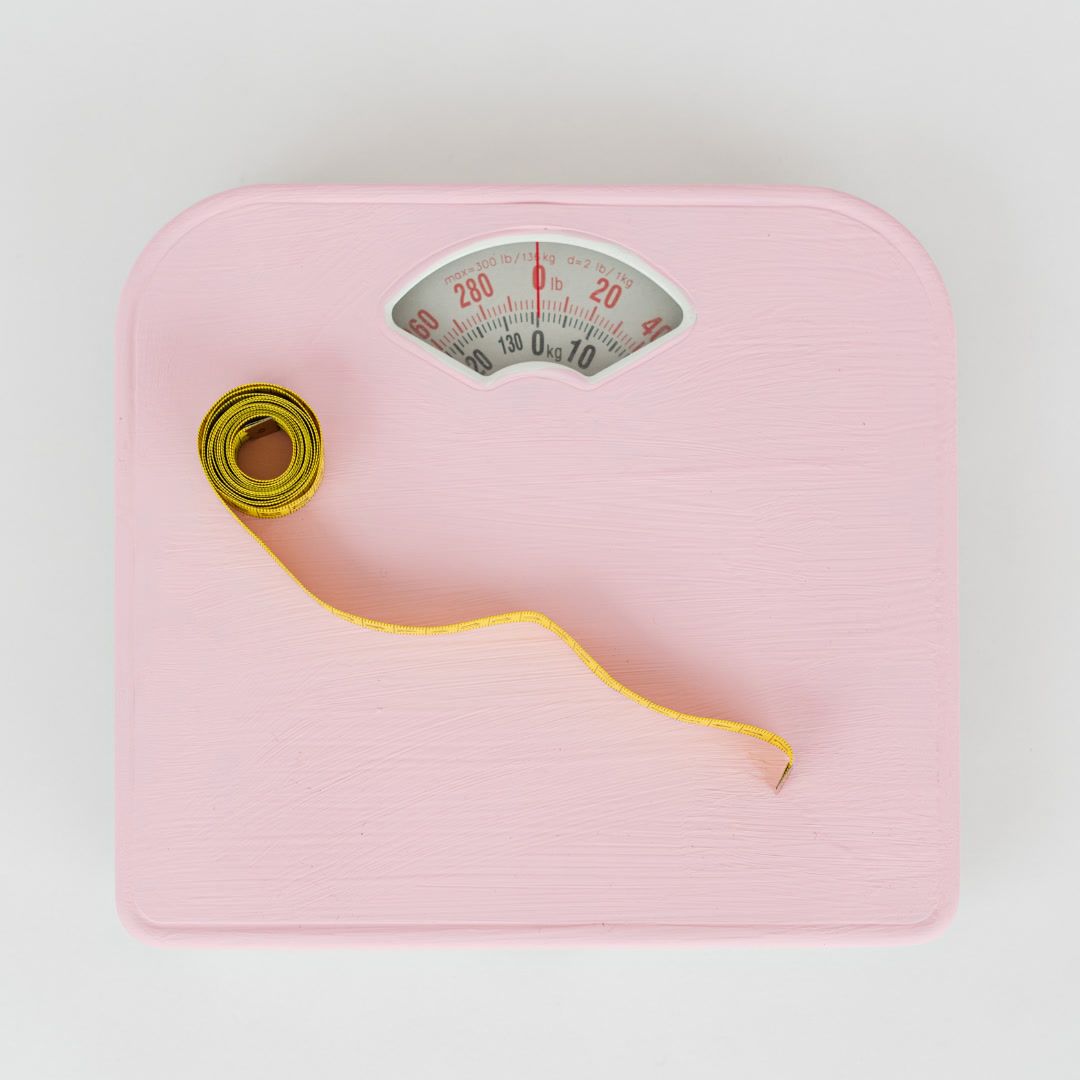13 Best At-Home Exercises for Back Pain Relief
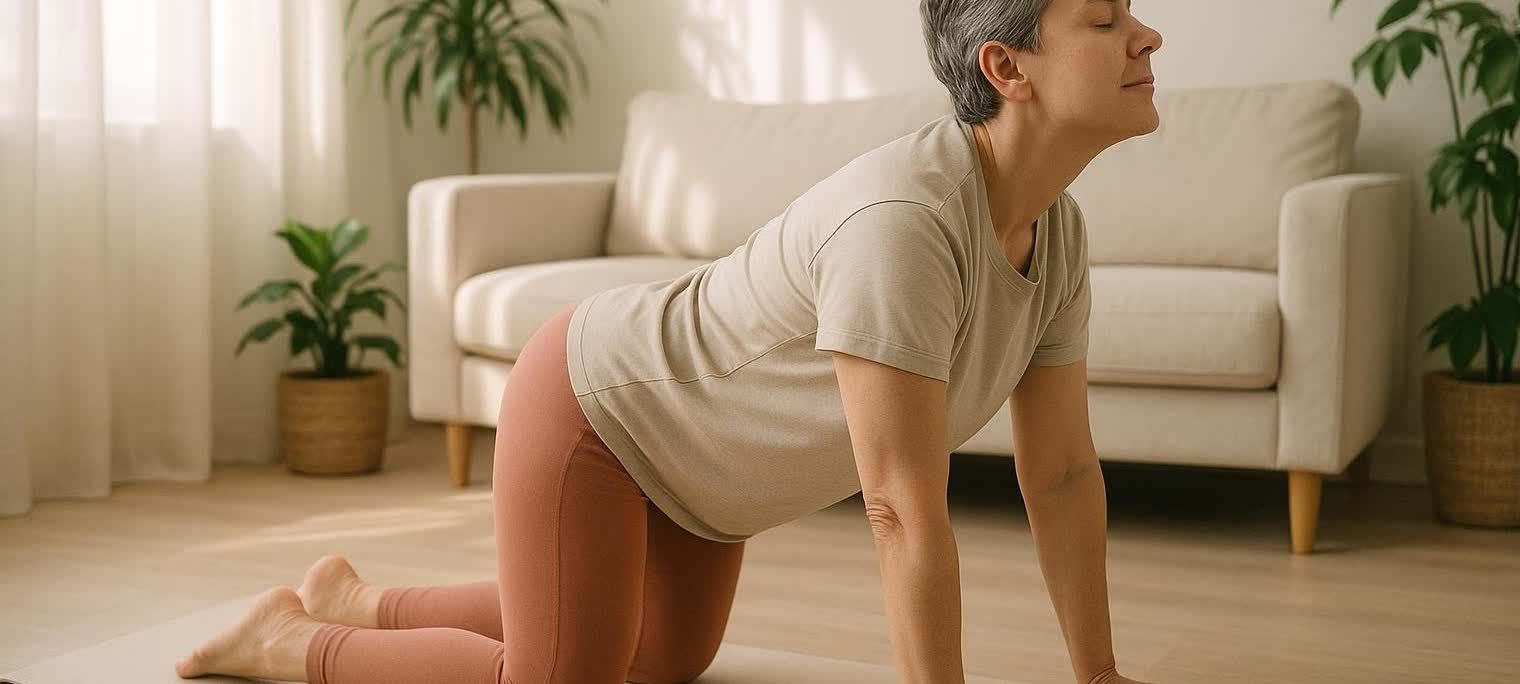
13 Best At-Home Exercises for Back Pain Relief
Struggling with lower-back discomfort after a long day at your desk or an afternoon of yardwork? You’re in good company: nearly 40 % of U.S. adults reported back pain within the past three months (CDC National Center for Health Statistics, Data Brief 415). This guide offers a progressive 4-week plan and step-by-step instructions to help you reduce discomfort and begin moving more freely starting today.
Important: Stop any exercise that spikes pain, numbness, or tingling. If symptoms persist or worsen, see a healthcare professional.
Table of Contents
- Why Exercise Beats Bed Rest for Back Pain
- Equipment Checklist
- The 13 Essential Back-Pain Exercises (form cues & modifications)
- 4-Week Progressive Routine
- Safety Tips & Red-Flag Warnings
- Tracking Progress: From Pain Scores to DEXA Data
1. Why Exercise Beats Bed Rest for Back Pain
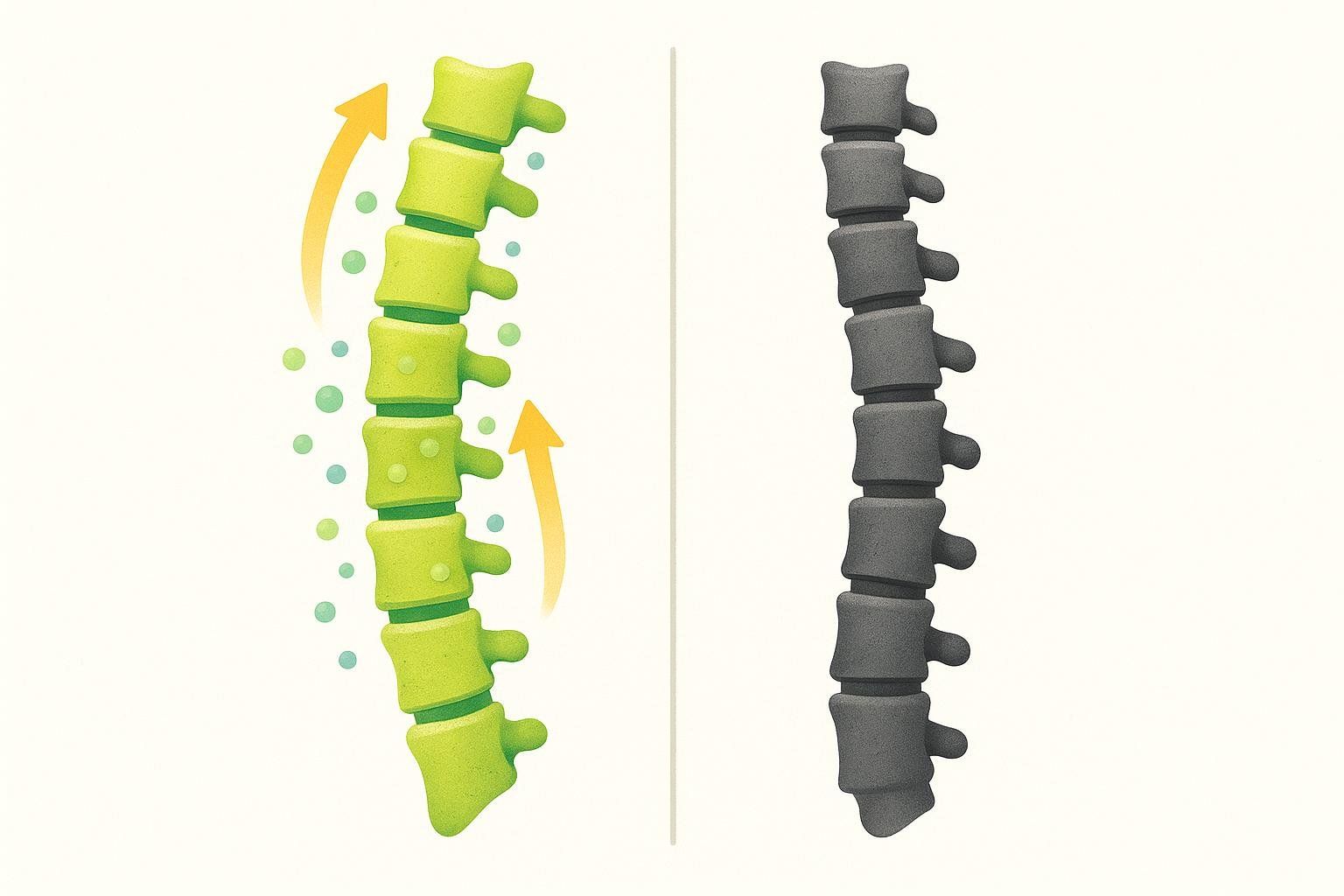
• Faster recovery. A systematic review in BMJ Evidence-Based Medicine found that staying active shortened acute low-back-pain episodes by 2–7 days compared with bed rest.
• Stronger support system. Targeted strength work turns the deep core and glutes into a natural back brace that supports your spine.
• Improved Disc Health. Dynamic movement pumps nutrients into spinal discs—something they can’t get when you’re lying still.
• Mood boost. Even 15 minutes of moderate exercise releases endorphins that blunt pain perception.
2. Equipment Checklist
All movements are body-weight only. A yoga mat, chair, and mini-band are helpful but optional.
3. The 13 Essential Back-Pain Exercises
This routine of exercises for back pain combines dynamic mobility, targeted stretching, and core-stability drills often prescribed in physical-therapy settings. Pick two or three moves to sprinkle into micro-breaks, or follow the full routine as outlined in the 4-week plan below.
1. Cat-Cow
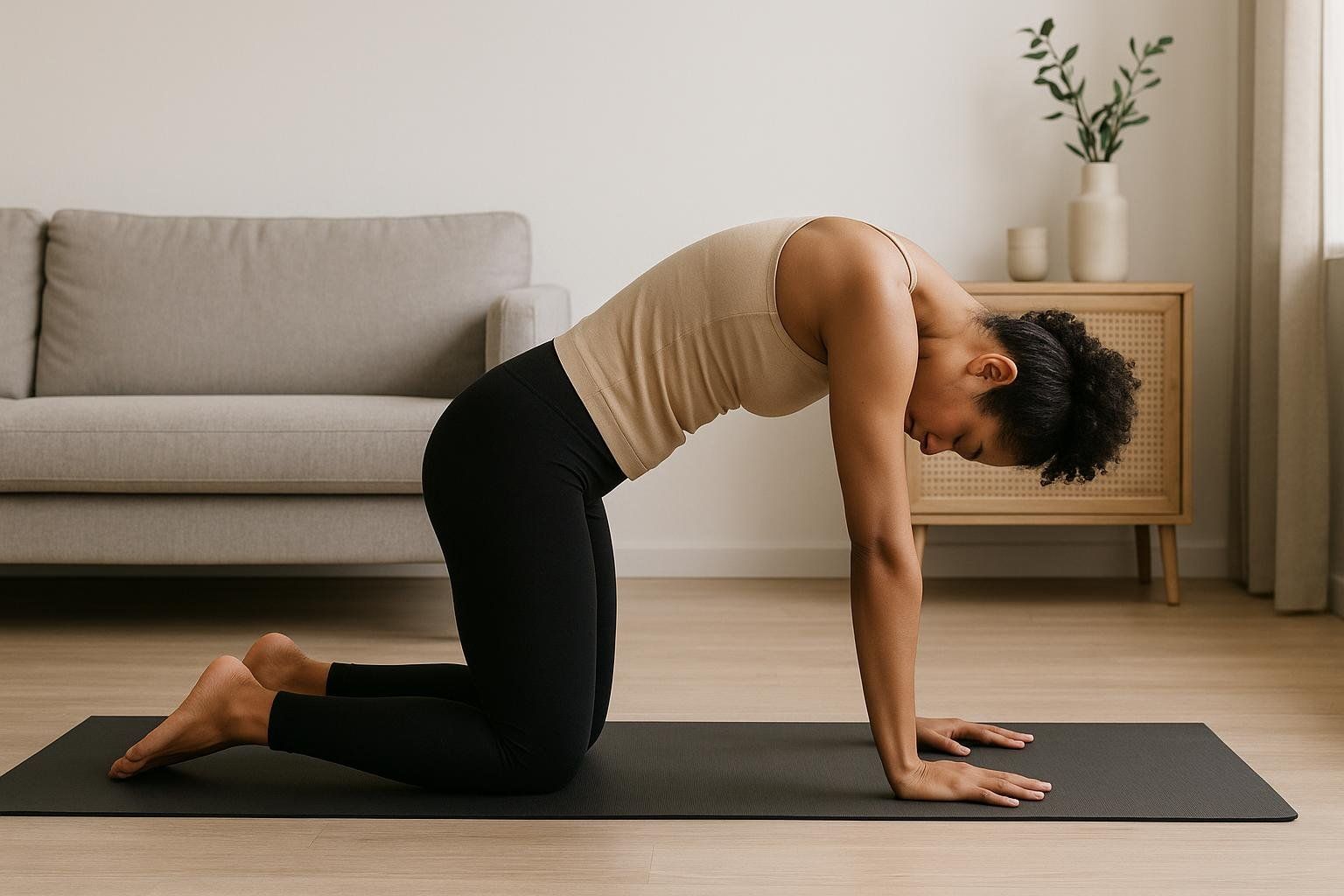
Purpose: Loosens stiff spinal joints and improves segmental mobility.
How-to: Start on all fours, wrists under shoulders and knees under hips. Inhale as you drop your belly and gently lift your head and tailbone (Cow). Exhale while rounding your back toward the ceiling and tucking your chin (Cat).
Volume: 8–10 slow cycles × 2 sets.
Easier: Place hands on an elevated surface if wrists bother you.
2. Bird Dog
Purpose: Trains core stability by resisting rotation.
How-to: From hands and knees, extend your right arm forward and left leg back until they’re parallel to the floor. Keep hips level and abs braced. Hold for 2 seconds; return and switch sides.
Volume: 10 reps/side × 2 sets.
Easier: Keep toes on the floor instead of lifting the leg fully.
Harder: Pause for 5 seconds at full extension.
3. Glute Bridge
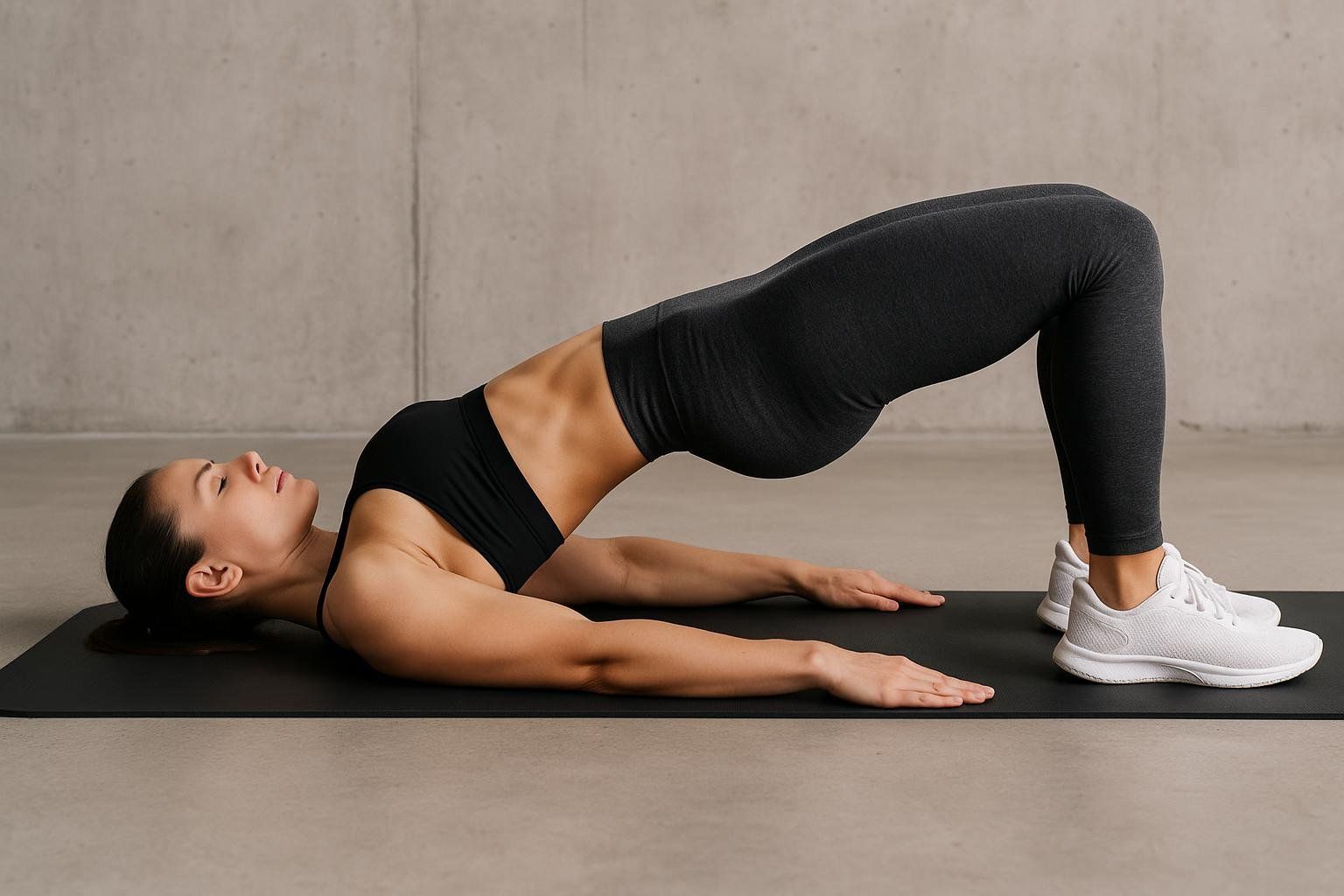
Purpose: Activates glutes to unload the lumbar spine.
How-to: Lie on your back, knees bent, feet hip-width. Press through heels to lift hips until shoulders, hips, and knees align. Squeeze glutes at the top; lower slowly.
Volume: 15 reps × 3 sets.
Easier: Shorten the range so hips rise only a few inches.
Harder: Add a mini-band around thighs.
4. Knee-to-Chest Stretch
Purpose: Gently stretches lumbar extensors and glutes.
How-to: Lie on your back, knees bent. Draw one knee toward your chest, clasping behind the thigh. Hold, then switch.
Volume: 30 s/side × 2 sets.
Easier: Keep the opposite foot flat instead of extended.
Harder: Hug both knees together for a double-knee stretch.
5. Figure-4 Stretch
Purpose: Releases the piriformis—often a culprit in sciatic-like pain.
How-to: Lie on your back and cross the right ankle over the left thigh to form a “4.” Thread hands behind the left thigh and gently pull toward your chest until you feel a stretch in the right glute. Swap sides.
Volume: 30 s/side × 2 sets.
Tip: Keep the small of your back on the ground to avoid lumbar strain.
6. Seated Hamstring Stretch
Purpose: Lengthens hamstrings that can tug on the pelvis and stress the low back.
How-to: Sit at the edge of a chair, one leg extended with heel on the floor and toes up. Hinge forward from hips, keeping the spine long, until you feel a stretch along the back of the thigh.
Volume: 30 s/side × 2 sets.
Easier: Bend the knee slightly if tension is intense.
7. Modified Plank (Knees Down)
Purpose: Builds anterior-core endurance without excessive lumbar load.
How-to: From forearms and knees, form a straight line from shoulders to knees. Brace abs and squeeze glutes.
Volume: 20 s hold × 3 sets.
Harder: Progress to full plank on toes or add time.
8. Side Plank (Knee Down)
Purpose: Strengthens lateral core and hip stabilizers.
How-to: Lie on your side, forearm under shoulder. Bend bottom knee to 90 °. Lift hips until your body forms a straight line from head to knees. Hold. Repeat other side.
Volume: 20 s/side × 3 sets.
Harder: Straighten the top leg or both legs.
9. Child’s Pose + Reach
Purpose: Opens thoracic spine and lats while decompressing low back.
How-to: From hands and knees, sit hips back toward heels, arms extended. Walk hands to the right for a lateral stretch; hold, then walk them left.
Volume: 20 s/side × 2 sets.
Easier: Place a cushion under hips if knees are stiff.
10. Dead Bug
Purpose: Trains anti-extension control of the trunk.
How-to: Lie on your back, arms pointed to ceiling, hips and knees at 90 °. Brace core to flatten low back into the floor. Lower the right arm and left leg toward the floor without arching, return, and switch.
Volume: 8 reps/side × 3 sets.
Tip: Exhale during each lowering phase to enhance abdominal engagement.
11. Standing Hip Hinge (Good Morning)
Purpose: Reinforces proper bending mechanics and educates the glutes/hamstrings to share the load.
How-to: Stand tall, hands on hips. Push your hips back as if closing a car door until you feel tension in hamstrings, then squeeze glutes to return upright. Keep spine neutral throughout.
Volume: 10 reps × 2 sets.
Harder: Hold a light broomstick along your spine to ensure alignment.
12. Cobra Press-Up
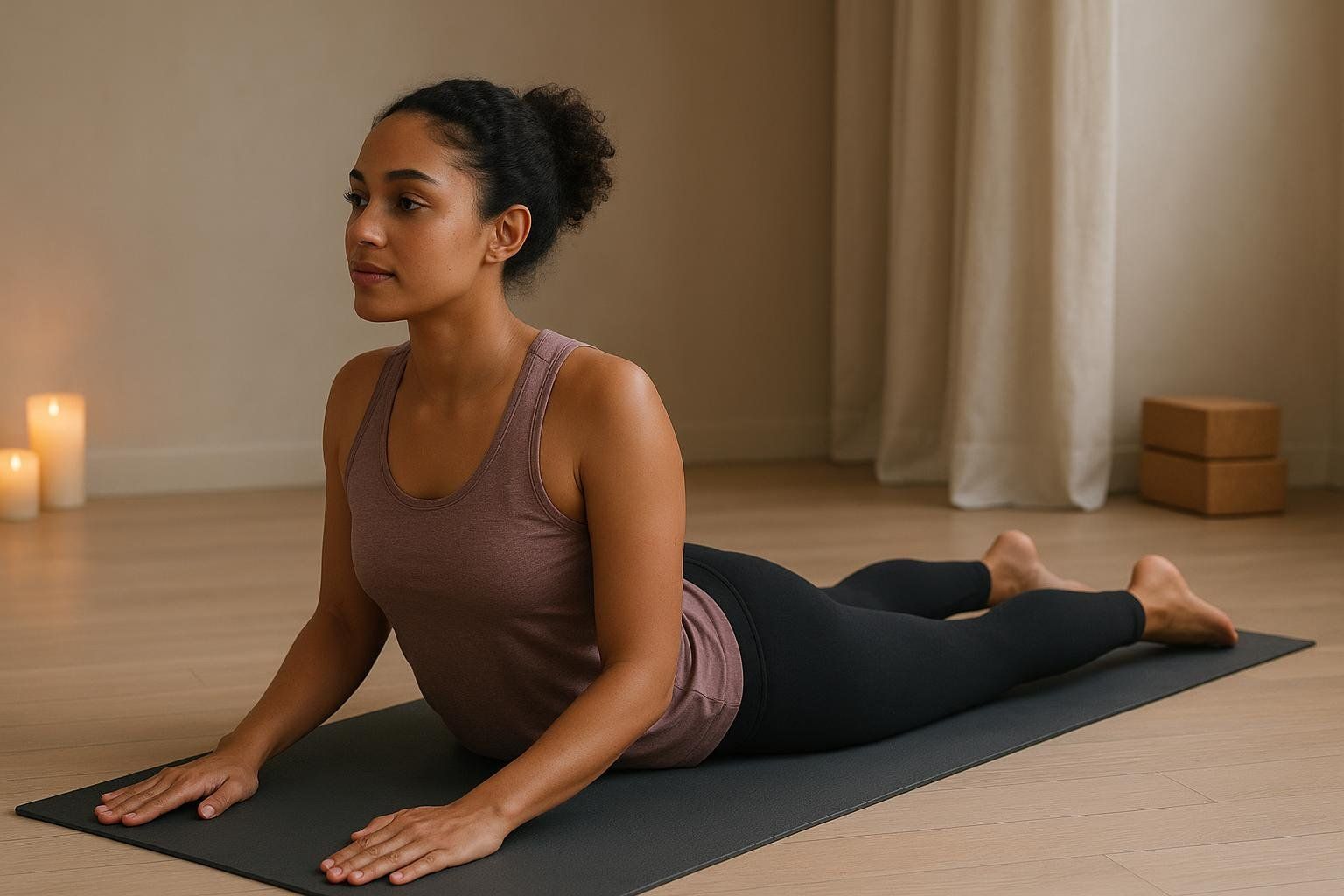
Purpose: Promotes lumbar extension and disc nutrition.
How-to: Lie face-down, hands under shoulders. Press through palms to lift chest while keeping hips on the floor. Only go as high as comfortable. Lower slowly.
Volume: 10 reps × 2 sets.
Easier: Prop onto forearms (Sphinx pose) instead of full press-up.
13. Single-Leg Bridge
Purpose: Challenges unilateral glute strength and pelvic stability.
How-to: Lie on your back, knees bent. Extend one leg so both thighs stay parallel. Drive the heel of the grounded foot into the floor and lift hips until the shoulders, hips, and knee form a straight line. Pause for a count, then lower with control. Switch legs after completing all reps.
Volume: 10 reps/side × 3 sets.
Easier: Keep the free heel lightly touching the floor for balance.
Harder: Loop a mini-band above the knees or place the working foot on an elevated surface.
4. 4-Week Progressive Routine

How the plan works: Each weekly routine replaces the previous one. The program progresses by introducing new, bolded exercises, increasing volume, or swapping simpler moves for tougher variations. Each session includes a warm-up and a cool-down, evolving from a simple recovery walk to targeted stretches and breathing drills as you progress.
Week 1 – Mobilize (3 sessions/week)
Warm-Up
- Cat-Cow — 8–10 cycles × 2 sets
Main Routine
- Knee-to-Chest — 30 s/side × 2 sets
- Figure-4 Stretch — 30 s/side × 2 sets
- Child’s Pose + Reach — 20 s/side × 2 sets
- Standing Hip Hinge — 10 reps × 2 sets
- Cobra Press-Up — 10 reps × 2 sets
- Seated Hamstring Stretch — 30 s/side × 2 sets
Cool-Down
- 5-minute easy walk to aid recovery.
Week 2 – Activate (4 sessions/week)
Warm-Up
- Cat-Cow — 8–10 cycles × 2 sets
- Knee-to-Chest — 30 s/side × 1 set
Main Routine
- Bird Dog — 10 reps/side × 2 sets
- Glute Bridge — 15 reps × 3 sets
- Modified Plank — 20 s hold × 3 sets
- Figure-4 Stretch — 30 s/side × 2 sets
- Child’s Pose + Reach — 20 s/side × 2 sets
- Seated Hamstring Stretch — 30 s/side × 2 sets
- Cobra Press-Up — 10 reps × 2 sets
Cool-Down
- 5-minute easy walk to aid recovery.
Week 3 – Endure (4 sessions/week)
Warm-Up
- Cat-Cow — 8–10 cycles × 2 sets
- Knee-to-Chest — 30 s/side × 1 set
Main Routine
- Bird Dog — 10 reps/side × 2 sets
- Glute Bridge — 15 reps × 3 sets
- Single-Leg Bridge — 10 reps/side × 3 sets
- Side Plank (knee) — 20 s/side × 3 sets
- Dead Bug — 8 reps/side × 3 sets
- Standing Hip Hinge — 12 reps × 2 sets
- Seated Hamstring Stretch — 30 s/side × 2 sets
- Cobra Press-Up — 10 reps × 2 sets
Cool-Down
- Figure-4 Stretch — 30 s/side × 1 set
- Child’s Pose + Reach — 20 s/side × 1 set
- 5-minute easy walk to aid recovery.
Week 4 – Integrate & Condition (5 sessions/week)
Warm-Up
- Cat-Cow — 8–10 cycles × 2 sets
- Knee-to-Chest — 30 s/side × 1 set
Full-Body Circuit
Complete three rounds, resting 60 seconds between rounds:
- Bird Dog — 12 reps/side
- Single-Leg Bridge — 12 reps/side
- Side Plank (knee) — 30 s/side
- Dead Bug — 10 reps/side
- Standing Hip Hinge — 12 reps
- Glute Bridge — 15 reps
- Cobra Press-Up — 12 reps
Cool-Down
- Figure-4 Stretch — 30 s/side × 1–2 sets
- Child’s Pose + Reach — 20 s/side × 1–2 sets
- 5-minute gentle walk to aid recovery.
5. Safety Tips & Red-Flag Warnings

🚩 Stop and seek medical care if you notice:
- Pain radiating below the knee or into the groin
- Numbness, tingling, or weakness in a leg
- Night pain that wakes you up
- Unexplained weight loss or bowel/bladder changes
Maintain breathable bracing—hold your core, not your breath—and increase volume gradually (≤ 10 % per week) to reduce injury risk.
Need extra mobility work? Try our desk-friendly guide to mobility exercises.
6. Tracking Progress: From Pain Scores to DEXA Data
Pain can be subjective; data is not. Pair subjective ratings (0–10 pain scale) with objective metrics:
- Re-test range: How far can you hinge without discomfort?
- Time to fatigue: Plank-hold duration.
- Body composition: A BodySpec DEXA scan reveals changes in lean mass that directly support spine stability—plus visceral fat insights linked to inflammation.
Book a mobile scan near you to see if your new routine is fueling muscle growth where you need it most.
The Takeaway
A successful back-pain strategy focuses on moving what’s tight, strengthening what’s weak, and reinforcing healthy movement patterns. Commit to the plan for four weeks, track your wins, and consider a BodySpec DEXA scan to quantify your progress. Your spine—and your future self—will thank you.
